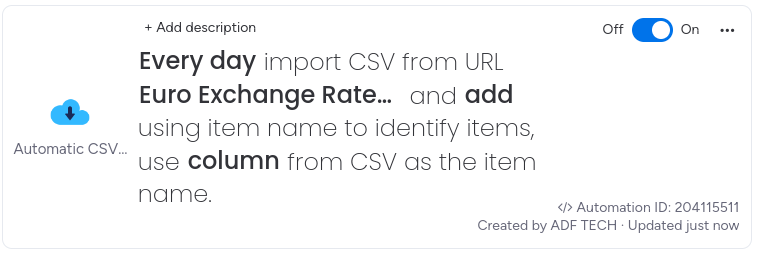Example Use Cases
Import orders from CSV file
After following the first time use instructions you will have a new monday board importing example data from the CSV file (via URL).
CSV file imported in this example:
There are 4 steps:
- Prepare a new monday board
- Add access credentials for the CSV file
- Add integration to the board
- Wait for the first import
1. Prepare a new monday board
-
Create new board for Orders
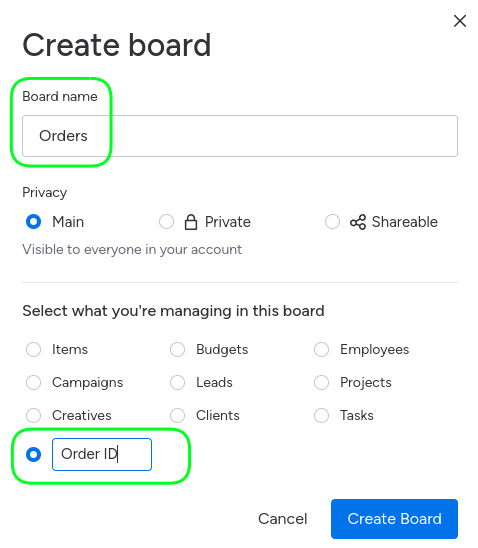
-
Remove default columns and items created on the board - this step is optional.
You can keep those default columns if you prefer. -
Add two columns: Product (type Text) and Quantity (type Numbers).
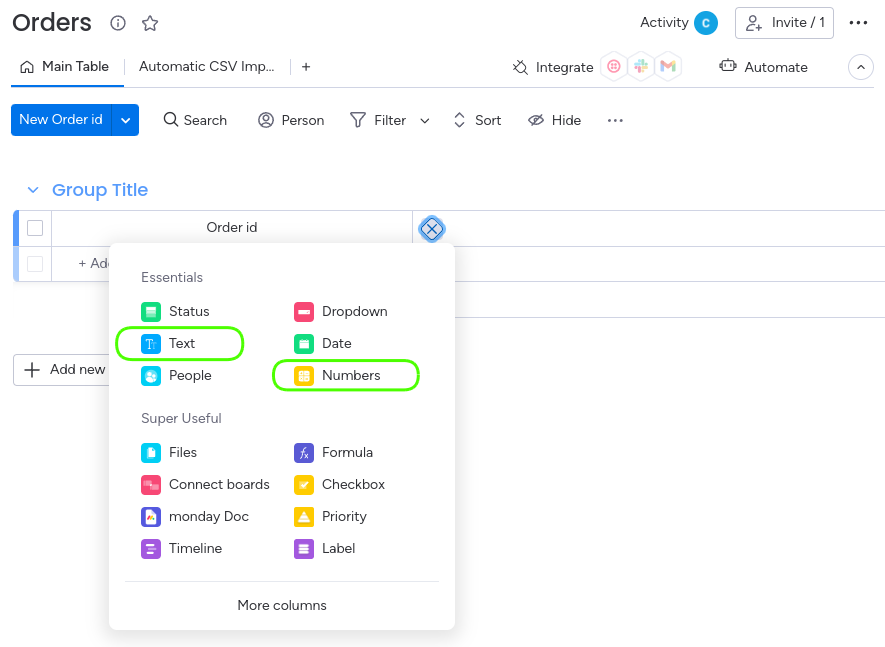
-
Your monday board should look like this:
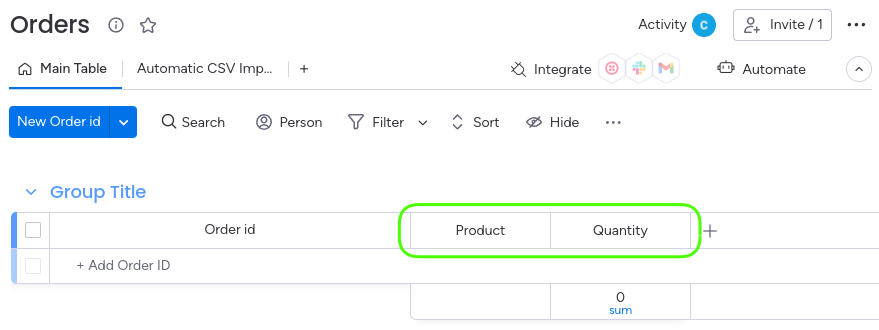
2. Add access credentials for the CSV file
-
Add Automatic Excel/CSV Import and Export to the board view.
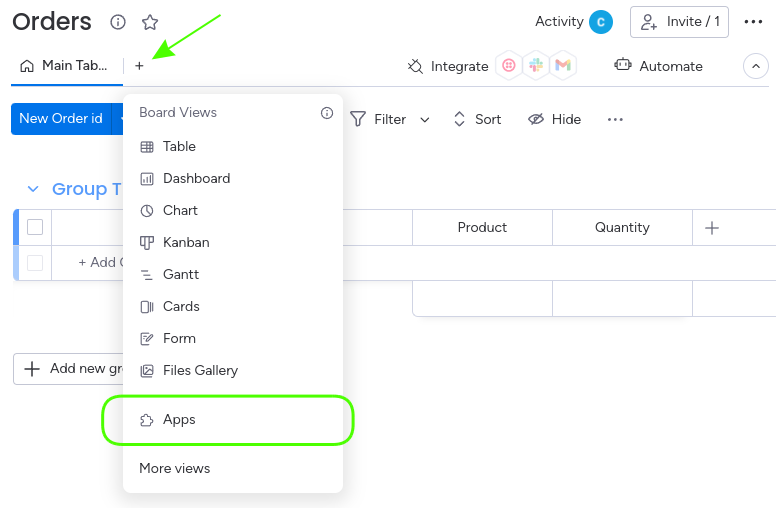
-
Click 'Add new credentials'.
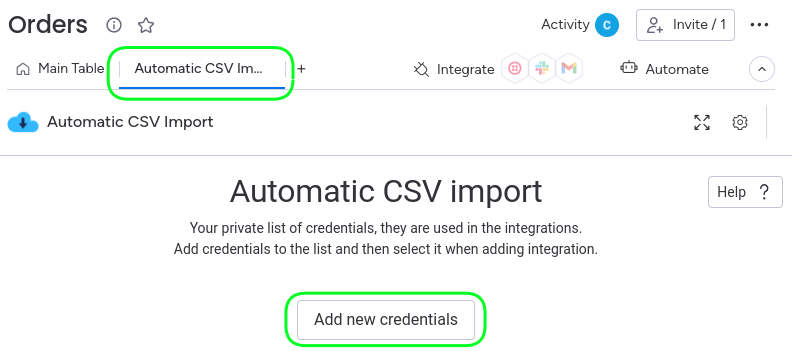
-
Select URL connection type.
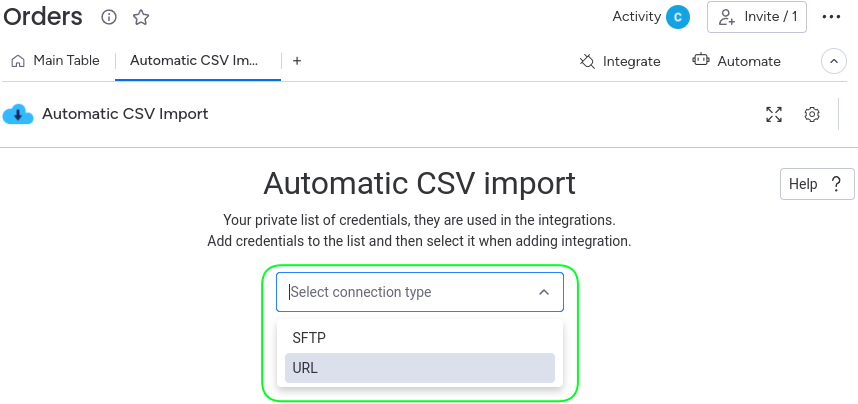
-
Enter required details and press 'Save Credentials'.
-
Text to display - enter "Orders from URL"
-
URL - We will use CSV file with example data, enter: https://docs.google.com/spreadsheets/d/e/2PACX-1vTW0v8D251Wj4vgS3K9uM3m98EKgr6eGpEqzkcEJ4H9ju-NuW-X5frm7-pqTR5tS5dW-WeGvDLsgDL9/pub?output=csv
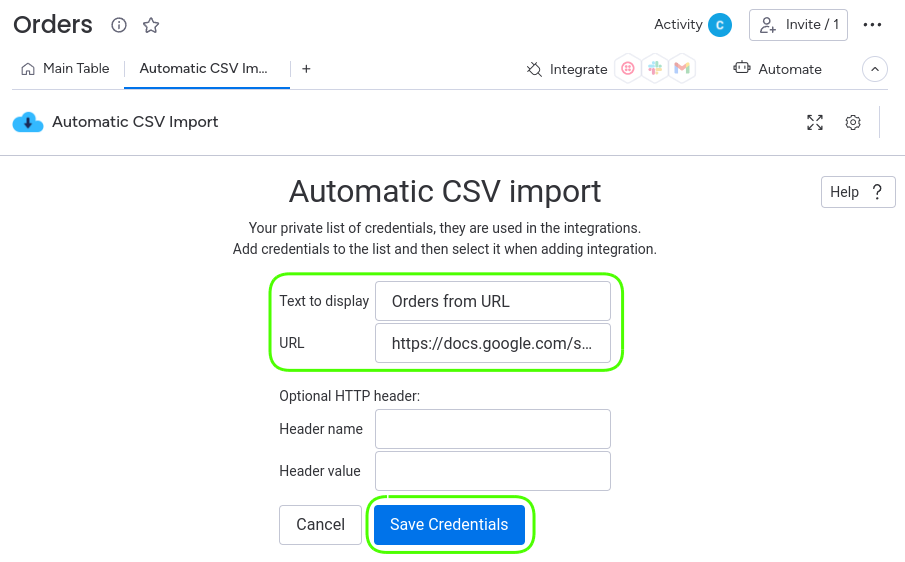
-
3. Add integration to the board
Add integration to the board:
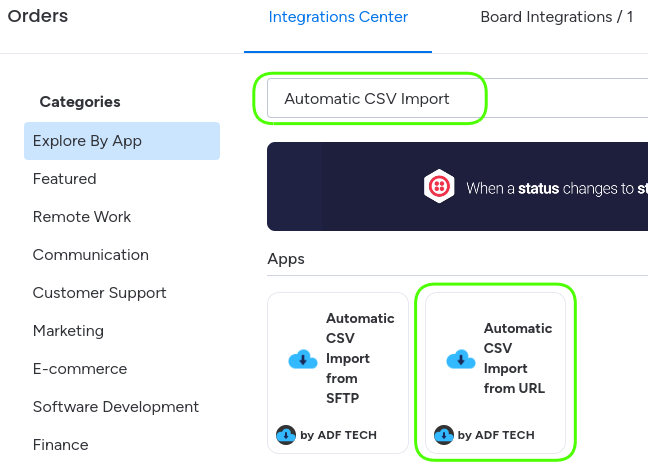
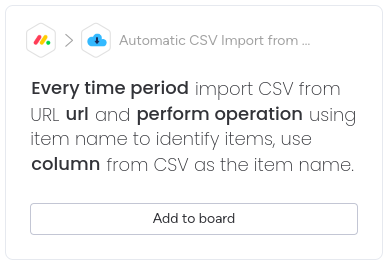
Configure integration parameters:
-
Every time period - Select how often CSV file is imported to the monday board. In our example se set Every 1 day at 7:00.

-
url - Select "Orders from URL". It is the URL we configured in step 2.

-
perform operation - Select "add".
More information about the options is available in section Integrations parameters.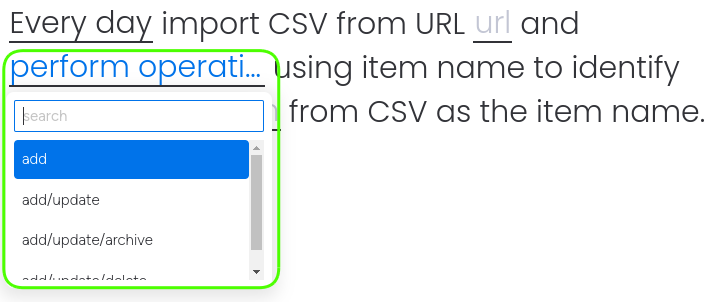
-
column - Type: Order ID
Order ID column from the CSV file will be used as the item name.
Click 'Add to Board' button to add integration to the board.
4. Wait for the first import
Wait for the first import to run at configured time in Every time period. When the file is imported, the board should look like this:
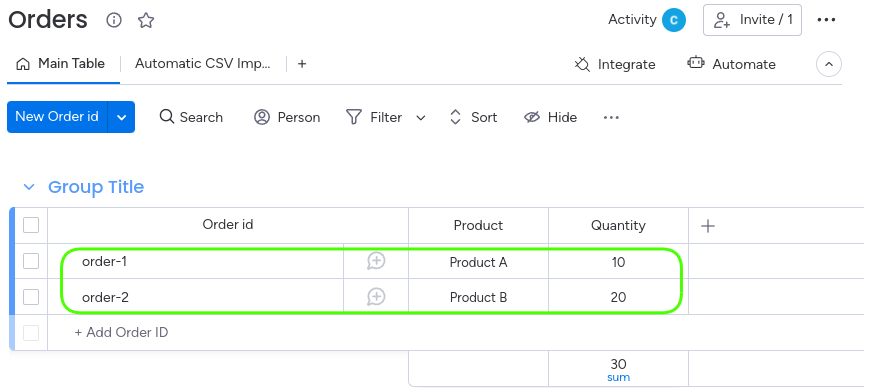
CSV file imported in this example:
Next steps will be specific to your use case, they may be:
- Read trough the following sections in this guide, they provide more detailed information.
- Prepare your CSV file and make it available via URL or SFTP server.
- Update columns on the board to match your new CSV file.
- Add credentials to access your CSV file (like in Step 2).
- Update integration to use access credentials for your new CSV file.
- Wait for the import to run at configured time.
If you have any questions, don't hesitate to contact us via email at contact@adftech.net.
Importing files from SFTP when the file name changes daily
If the file name on the SFTP server changes each day (e.g., includes a date or timestamp), the wildcard character * can be used to dynamically match the file name.
The * wildcard acts as a placeholder for one or more characters in the file name. This allows to identify and import the file without needing an exact match.
Example:
If the daily backup files are named like this:
- backup/file_20240130.csv
The user can specify the file path in the Integration Sentence as:
-
backup/file*.csv
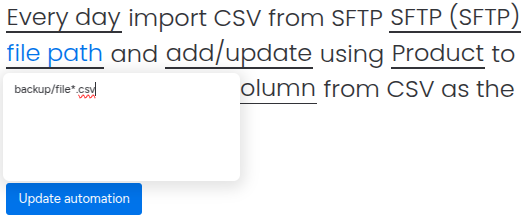
This ensures that the import picks up the file that matches the pattern. However, make sure only one file that matches the pattern exists in this folder during each import.
Import Euro exchange rates from European Central Bank
European Central Bank
is publishing exchange rates in CSV (.zip) file.
You can use this application to import exchange rate every day to your board.
Follow 3 steps below to import exchange rates:
1. Create a new board 'Euro Exchange Rates'
Add Number columns for currencies you would like to import. Available currencies are: USD, JPY, BGN, CZK, DKK, GBP, HUF, PLN, RON, SEK, CHF, ISK, NOK, TRY, AUD, BRL, CAD, CNY, HKD, IDR, ILS, INR, KRW, MXN, MYR, NZD, PHP, SGD, THB, ZAR.
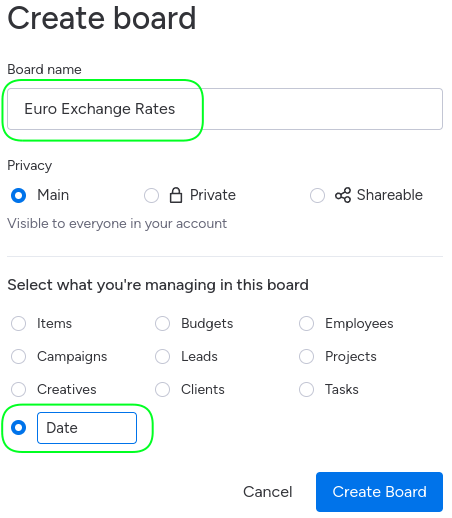

2. Add new URL credentials in Automatic Excel/CSV Import and Export board view
Add Automatic Excel/CSV Import and Export view to the board, then click 'Add new credentials' and enter the values:
-
Name: Euro Exchange Rates
-
URL: https://www.ecb.europa.eu/stats/eurofxref/eurofxref.zip
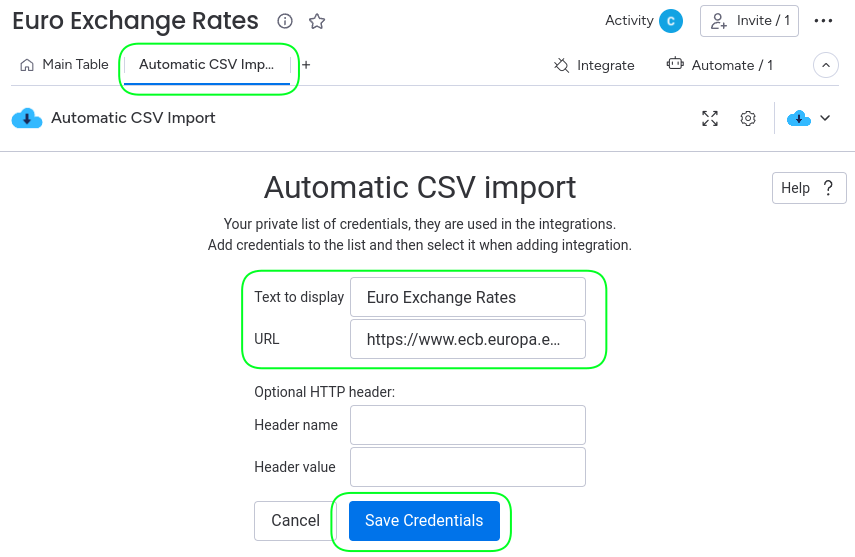
3. Add integration
Add 'Every time period import CSV from URL url and perform operation using item name to identify items, use column from CSV as the item name.' and use this configuration:
-
Every time period: every 1 day at 6:00
-
url: Select 'Euro Exchange Rates'
-
perform operation: add
-
column: Date
